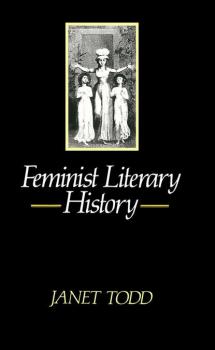MREADZ.COM - много разных книг на любой вкус
Скачивание или чтение онлайн электронных книг.Peripheral Nerve Disorders
Peripheral Nerve Disorders: Pathology and Genetics is a definitive, clinically-oriented guide to the pathology of peripheral nerve disorders. These commonly seen neurological challenges have many causes and accurate diagnosis is often necessary via pathological analysis. New techniques exploiting molecular biological knowledge have opened up new vistas to understanding the pathogenesis of these disorders, and hence their effective management. This new title takes a disease-oriented approach to understanding the pathology of these conditions. It combines classical and contemporary techniques to enable practitioners in neurology and neuropathology to better understanding of the disease processes underlying patients’ presentations and to formulate appropriate management plans. Peripheral Nerve Disorders: Pathology and Genetics is a valuable resource for neurologists, neuropathologists, pathologists, neurobiologists and geneticists.
Atlas of Dermatopathology
This essential guide offers trainees and practicing dermatologists alike a reliable and easy-to-navigate reference tool for the accurate and expedient diagnosis of skin diseases. With its balanced consideration of both clinical and histopathological features, the book supports the straightforward, pattern-based identification of a wide range of disorders, and breaks diagnostic criteria down into accessible, bite-sized pointers. 250 high-quality images complement the text to wonderful effect, and offer invaluable points of comparison for anyone working in the field of dermatology today.
Cardiology Board Review
This compact but comprehensive board review includes everything you need to successfully prepare for the ABIM Cardiology Board Review examination. Features over 1200 questions with answers and clear explanations Includes over 400 accompanying images Covers all key areas of cardiology practice, from history/physicial examination through all major diseases/disorders, along with special topics, e.g. consultative cardiology, covered on the exam Complements standard textbook reading Written by an internationally-recognized, well-respected and well-published senior cardiologist, expert in valvular heart disease and cardiovascular imaging
African American Theater
Written in a clear, accessible, storytelling style, African American Theater will shine a bright new light on the culture which has historically nurtured and inspired Black Theater. Functioning as an interactive guide for students and teachers, African American Theater takes the reader on a journey to discover how social realities impacted the plays dramatists wrote and produced. The journey begins in 1850 when most African people were enslaved in America. Along the way, cultural milestones such as Reconstruction, the Harlem Renaissance and the Black Freedom Movement are explored. The journey concludes with a discussion of how the past still plays out in the works of contemporary playwrights like August Wilson and Suzan-Lori Parks. African American Theater moves unsung heroes like Robert Abbott and Jo Ann Gibson Robinson to the foreground, but does not neglect the race giants. For actors looking for material to perform, the book offers exercises to create new monologues and scenes. Rich with myths, history and first person accounts by ordinary people telling their extraordinary stories, African American Theater will entertain while it educates.
Feminist Literary History
In this timely book Janet Todd offers an analysis and defence of the feminist literary history practised by Elaine Showalter and other contemporary American literary critics. She argues that this approach rightly links the political concerns of feminist criticism to the uncovering of female voices embedded in history. Todd reconstructs the development of feminist literary history from the 1960s through to the present day, highlighting the central themes as well as the strengths and weaknesses. She then examines the debate between American feminist critics, on the one hand, and feminist critics inspired by the work of French theorists such as Kristeva, Irigaray and Cixous, on the other. She defends feminist literary history against its critics and casts doubt on some of the uses of psychoanalysis in feminism. Todd also considers the debate with men and assesses the relevance of academic analyses of gender, masculinity and homosexuality. Feminist Literary History is a forceful and committed work, which addresses some of the most important issues in contemporary feminist theory and literary criticism. It will be widely read as an introductory text by students in English literature, modern languages, women's studies and cultural studies.
Outpacing the Competition
Praise for Outpacing the Competition Patent-Based Business Strategy «Outpacing the Competition provides a useful IP management framework for rapidly evolving and inherently unpredictable R&D environments where companies are partners, customers, and competitors at the same time.» –Marshall Phelps, Corporate Vice President for IP Policy & Strategy, Microsoft «Robert Cantrell's book Outpacing the Competition: Patent-Based Business Strategy?should be read by?anyone?involved in the practice of litigating or licensing patent rights or policymakers responsible for patent issues. Mr. Cantrell provides a cogent approach for applying decisional methodology and game theory to enhance the utilization and understanding of patent rights.»–Bradley J. Olson, Esq., patent attorney, Washington, DC «Robert Cantrell makes a compelling case for using intellectual property as a core for building solid business strategy. He provides a unique and valuable perspective on competitive advantage, as delivered through patent-based business strategy. This is an excellent addition to anyone's business strategy arsenal.» –Jeff Hovis, Managing Principal, Product Genesis, Innovation Genesis LLC «Robert truly treats patents and related intellectual property as both a weapon and a shield to help the reader use patents to out-maneuver global competitors of all kinds—the low-cost producer, the high-end innovator, etc. CEOs, attorneys, business and engineering professionals and the like will enjoy the military imagery and flavor provided by Robert. Thanks for clarifying how critical it is to have an understanding of patents in running a truly competitive global business today.» –José W. Jimenez, Esq., Chief Intellectual Property Officer,AMS Research Corporation
Believe and Destroy
There were eighty of them. They were young, clever and cultivated; they were barely in their thirties when Adolf Hitler came to power. Their university studies in law, economics, linguistics, philosophy and history marked them out for brilliant careers. They chose to join the repressive bodies of the Third Reich, especially the Security Service (SD) and the Nazi Party s elite protection unit, the SS. They theorized and planned the extermination of twenty million individuals of allegedly inferior races. Most of them became members of the paramilitary death squads known as Einsatzgruppen and participated in the slaughter of over a million people. Based on extensive archival research, Christian Ingrao tells the gripping story of these children of the Great War, focusing on the networks of fellow activists, academics and friends in which they moved, studying the way in which they envisaged war and the world of enemies which, in their view, threatened them. The mechanisms of their political commitment are revealed, and their roles in Nazism and mass murder. Thanks to this pioneering study, we can now understand how these men came to believe what they did, and how these beliefs became so destructive. The history of Nazism, shows Ingrao, is also a history of beliefs in which a powerful military machine was interwoven with personal experiences, fervour, anguish, utopia and cruelty.
Communicating The New
Communicating radical innovation is very different from discussing marginal change. Erwin's book provides a serious analysis of why, in this era of VUCA—Volatility, Uncertainty, Complexity and Ambiguity—we need to change our individual and organizational modes of communication. Erwin then provides a series of concrete, practical communication methodologies that we so need. Communicating the New is a book that needs to be offered in all of our best business-school classes. —Bruce Nussbaum, author of Creative Intelligence, former assistant managing editor for BusinessWeek, and Professor of Innovation & Design at Parsons The New School of Design «One of the main problems with executing innovation in organizations is also one of the least obvious. Communicating The New reminds us about an often neglected but crucial part in the innovation process. Applying the principles contained in this book will increase your chances for innovation success, both inside your company—overcoming organizational barriers, as well as outside—convincing your customers. This is an essential read for those who not only preach for improving the current state of things, but more important to those responsible for executing it.» —Luis Arnal, Managing Partner, INSITUM «I was hooked instantly. The names of people that I should give this book to keep building with each new chapter. Communicating the New is thorough as well as thoughtful in providing an impressive compendium of models, framework, methods, and tools for navigating the 21st-century challenges of creating The New. Finally, a useful resource to navigate the complexity of creating The New.» —Clement Mok, Designer, Entrepreneur, and Instigator «Anyone who has experienced the challenge of co-creating The New and engaging enterprise audiences will find useful ways to produce insight, influence, and impact.» —Paul Siebert, Director of Research + Strategy, Steelcase
Communicating Embedded Systems
The increased complexity of embedded systems coupled with quick design cycles to accommodate faster time-to-market requires increased system design productivity that involves both model-based design and tool-supported methodologies. Formal methods are mathematically-based techniques and provide a clean framework in which to express requirements and models of the systems, taking into account discrete, stochastic and continuous (timed or hybrid) parameters with increasingly efficient tools. This book deals with these formal methods applied to communicating embedded systems by presenting the related industrial challenges and the issues of modeling, model-checking, diagnosis and control synthesis, and by describing the main associated automated tools.
SolidWorks 2009 Bible
SolidWorks Bible is a comprehensive reference-tutorial that covers the basics, but then quickly ramps up to more advanced level topics. Every feature is thoroughly covered yet written in a way that makes learning this robust program seem non-threatening and uncomplicated. In a market full of books for beginners this is the one book that goes into extensive detail, not just on «how» the software works, but in many cases «why» it works the way it does. The author is well known in the SolidWorks community and uses SolidWorks on a daily basis as his main design tool in his contracting and consulting work. Many topics covered in SolidWorks Bible are not found in any other publication or even documentation directly from SolidWorks. Note: CD-ROM/DVD and other supplementary materials are not included as part of eBook file.









